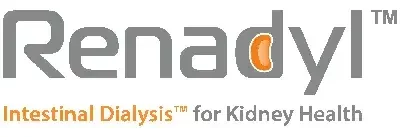Management options for stages 4–5 of chronic kidney disease
Necessary management of progressing disease
As patients enter the later stages of chronic kidney disease (CKD), they need to begin more intense treatments, such as dialysis or may require a kidney transplant. These treatments will be prescribed in addition to any medication and probiotics patients may already be taking, as well as proper diet and exercise. It is important to keep in mind that although the late stages of CKD are more severe, proper treatment can help patients live full and productive lives.
Dialysis and chronic kidney disease
Many patients in the later stages of CKD will require regular dialysis treatments. Dialysis is a treatment that purifies the blood of any toxins that have built up due to damaged or impaired kidneys. There are 2 types of dialysis: hemodialysis and peritoneal dialysis. Both types of dialysis require multiple treatments a week in order to properly purify the blood and can be performed either at home or at a kidney treatment center.
Hemodialysis
Hemodialysis uses a dialyzer, which acts as a mechanical kidney, to purify the blood of waste and excess fluid. Patients sit for three 4-hour sessions per week while their blood is cycled through the dialyzer to be cleaned and then filtered back into the body. In order to transfer the blood, vascular access is required to transfer the blood quickly and in large quantities. There are 3 types of vascular access: 
Peritoneal dialysis
Peritoneal dialysis is by far the most common method of dialysis for patients who choose to dialyze at home. Unlike hemodialysis, which uses a vascular access to filter blood in and out of the body, peritoneal dialysis uses the peritoneal cavity within the body. The peritoneum is a thin membrane that lines the abdomen and is filled with a clear liquid called dialysate. The dialysate filters the waste and excess fluid from the patient’s blood. Once the waste and dialysate has remained in the body for a certain amount of time, it is then drained and replaced with fresh dialysate.
Although this method can be very convenient for many patients, there are certain requirements that must be met in order to dialyze using the peritoneal dialysis method. Patients must be able to adhere to a strict therapy schedule in order to properly treat the disease, as well as be able to perform the tasks involved in exchanging the old dialysate with the new.
If a patient meets these requirements, they can elect either continuous ambulatory peritoneal dialysis (CAPD) or automated peritoneal dialysis” (APD). CAPD is performed 4 times a day in 30-minute sessions. This method involves placing a bag of dialysate on an intravenous pole or coat rack and then draining and filling the liquid to make the exchange. APD is the more preferred method since it can be performed while the patient is sleeping using a cycler machine to exchange the old dialysate with the new.
Probiotics
Taking certain probiotics can help patients with CKD live a better quality life. When taken during the later stages of CKD, probiotics help maintain remaining kidney function by feeding off of toxins left in the bloodstream. This puts less strain on the kidneys and helps remove the toxins when the probiotics are excreted along with fecal matter in the feces. Click here to learn more about how probiotics work. Then, discover the unique benefits associated with Renadyl™, a scientifically formulated probiotic designed to promote kidney health.
Lifestyle changes
Patients in the late stages of CKD are encouraged to make the same healthy lifestyle choices as those in the early stages. This includes being diligent to take any prescription medications that the doctor may prescribe, such as blood pressure medicine or pain medication, as well as developing healthy eating habits and remaining active. Diet and exercise play a major role in maintaining kidney function, as well as promoting good health overall. Although staying active may be difficult for patients on dialysis, exercise can help lower blood pressure, lower a patient’s risk for cardiovascular disease, as well as benefit patients psychologically by giving them a positive outlook on their health. Learn how you can get started pursuing a healthy lifestyle while living with CKD.




